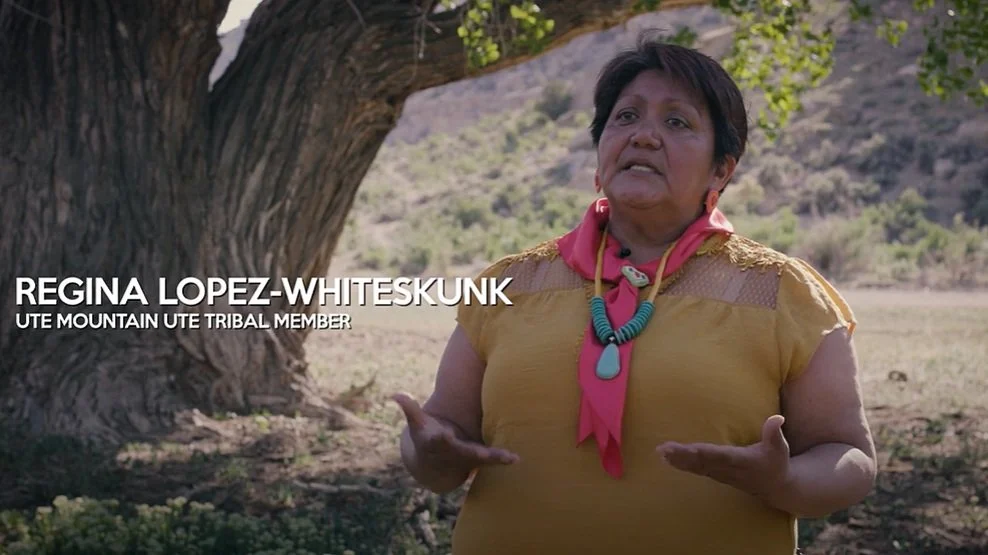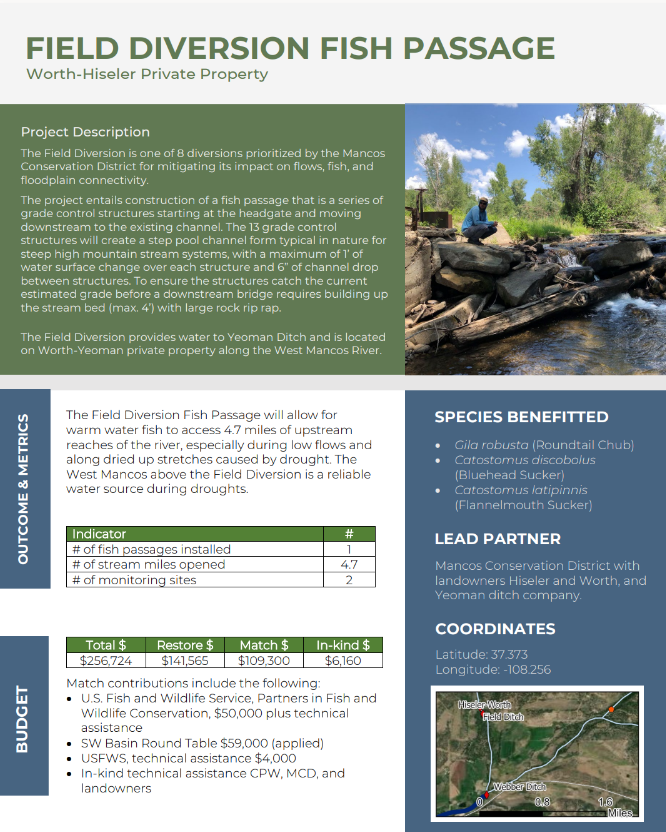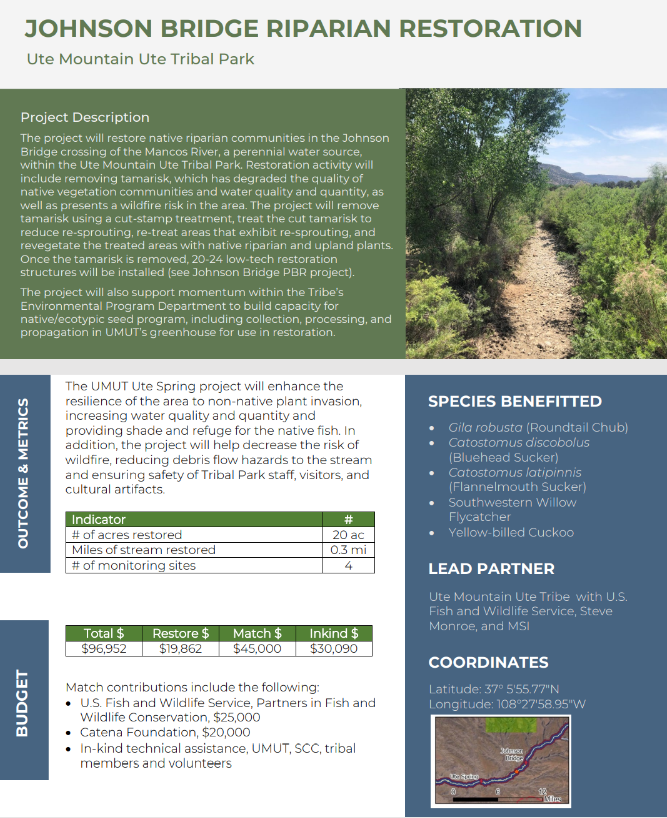Mancos River RESTORation
Mountain Studies Insitute has been working with a network of partners throughout the Mancos Watershed for the past several years, towards solving a complex problem: How to improve the resilience of the Mancos River and its watershed in the face of drought and climate change?
Together with the Ute Mountain Ute Tribe, Mancos Conservation District, Mesa Verde National Park, Trees Water People, Compass Ltd, Mancos Watershed Group, and numerous private landowners and volunteers throughout the watershed, we are making progress towards addressing this problem.
Initial phases of this effort were funded by The Wildlife Conservation Society’s Climate Action Fund, the Catena Foundation, US Fish and Wildlife Service, and private donations.
Most recently, our partnership secured funding from the National Fish and Wildlife Foundation’s Restoration and Stewardship of Outdoor Resources and Environment RESTORE Colorado program:
Restoring Riparian and Instream Habitat on Mancos River to Improve Connectivity for Native Fish (CO)
This project will benefit imperiled warm water native fish: Roundtail Chub, Bluehead Sucker and Flannelmouth Sucker.
Project Summary:
The Mancos River is a unique tributary of the San Juan and Colorado rivers for conservation: (1) native warm water fish are protected from predators by an impassible barrier near the San Juan confluence, and (2) 65% of the watershed is on the Ute Mountain Ute Reservation, one of Colorado’s two federally recognized tribes. River flows have declined by 60%, which dries up by July due to diversions and drought.
The Restoring Riparian and Instream Habitat on Mancos River to Improve Connectivity for Native Fish will benefit the imperiled Roundtail Chub, Bluehead Sucker and Flannelmouth Sucker while improving in-stream and riparian habitat for other wildlife, beneficiary communities, and Ute Mountain Ute Tribe who values the water, cottonwoods, and native shrubs our project will restore. We will rectify 2 fish passage barriers, open access to 16 miles of stream for refugia, restore 1.34 miles of stream geomorphology and aquatic habitat, restore 11.32 acres of floodplain, and treat 40 acres for tamarisk.
To achieve the outcomes, activities will: 1) Connect fish to in-stream habitat and improve hydrology; 2) Restore riparian habitat and revegetate degraded floodplains; and 3) Build cross-community capacity for restoration, sustainability, and scaling. Eight projects build on Phase 1 activity, span multiple jurisdictions (public, private, Tribal) and are prioritized in regional plans. Partners are the Ute Mountain Ute Tribe, Mesa Verde National Park, and Mancos Conservation District.











